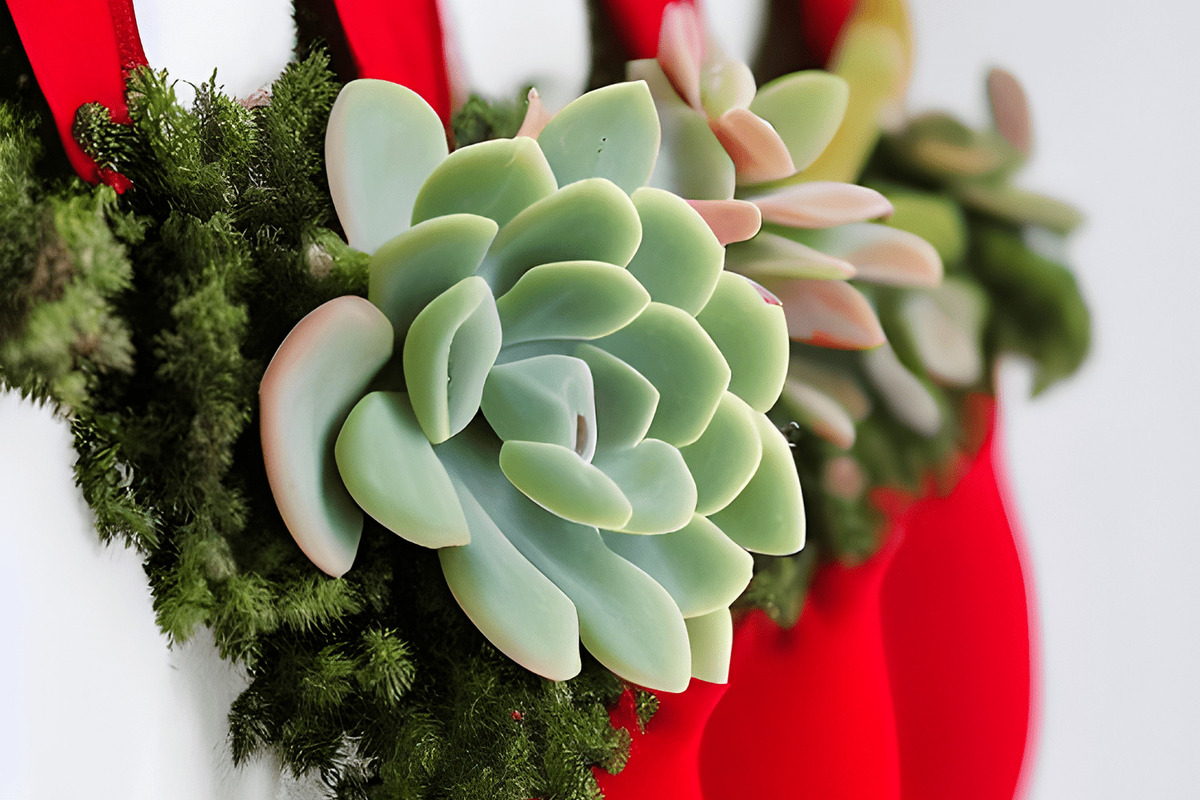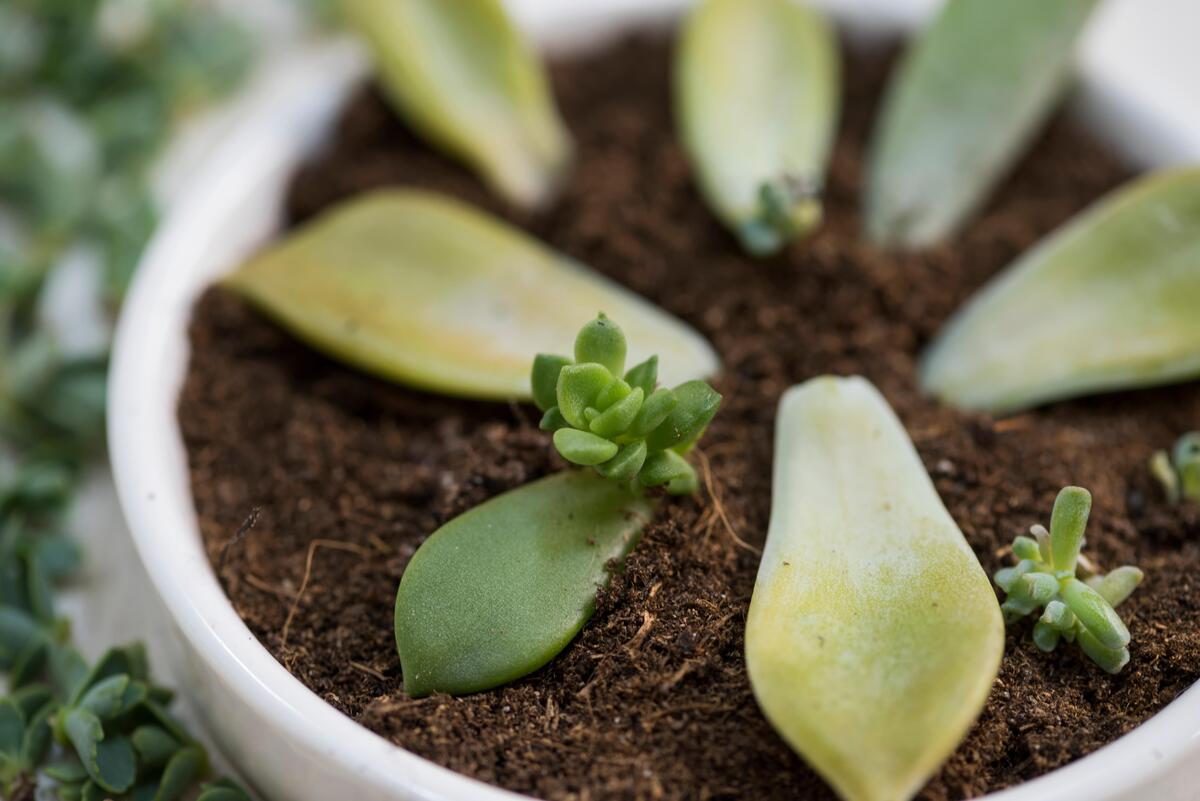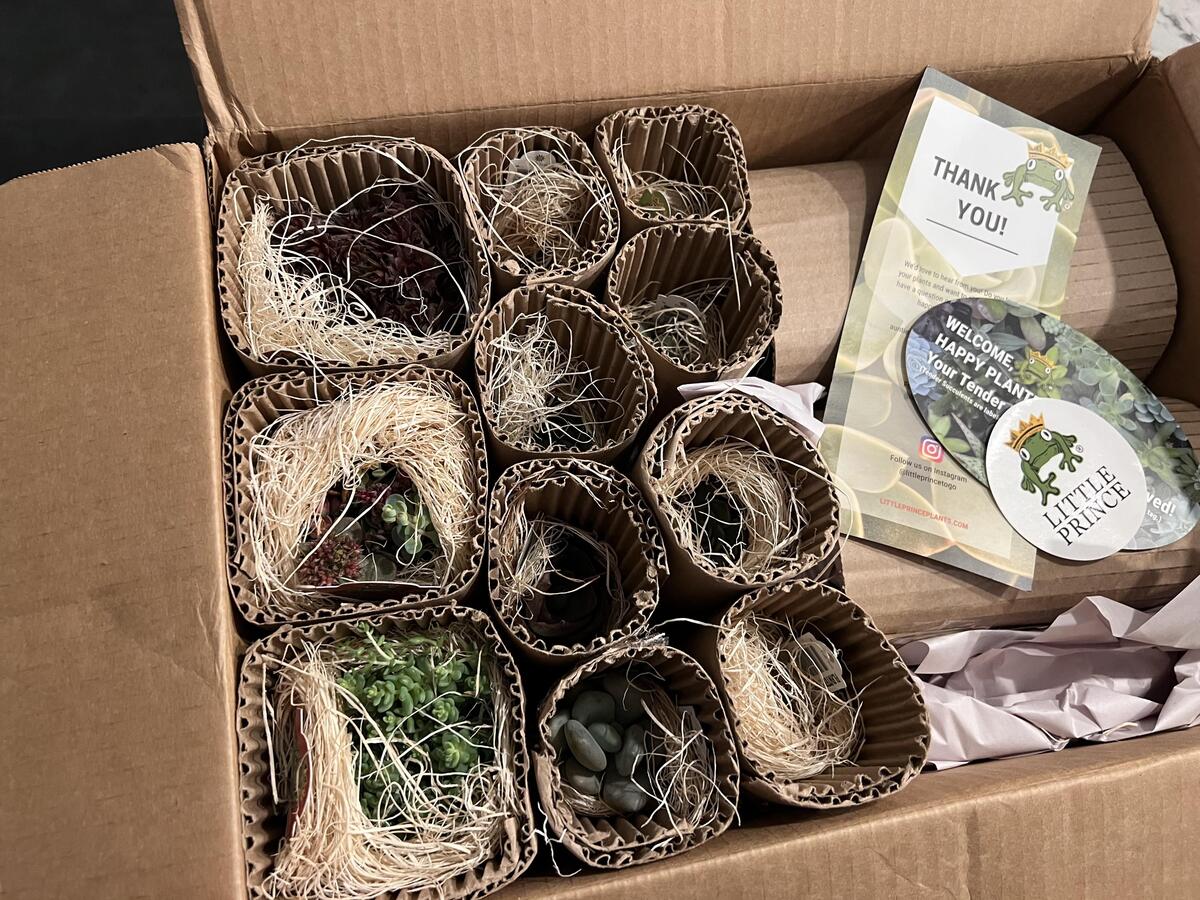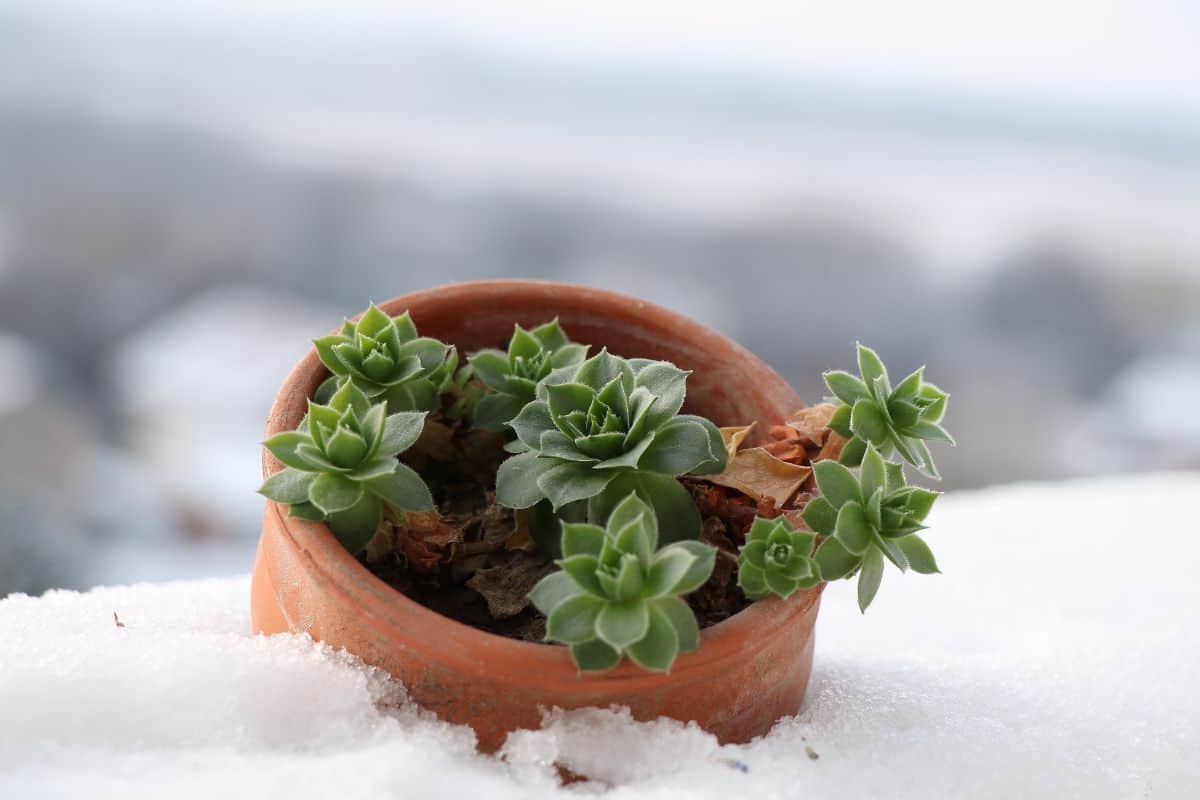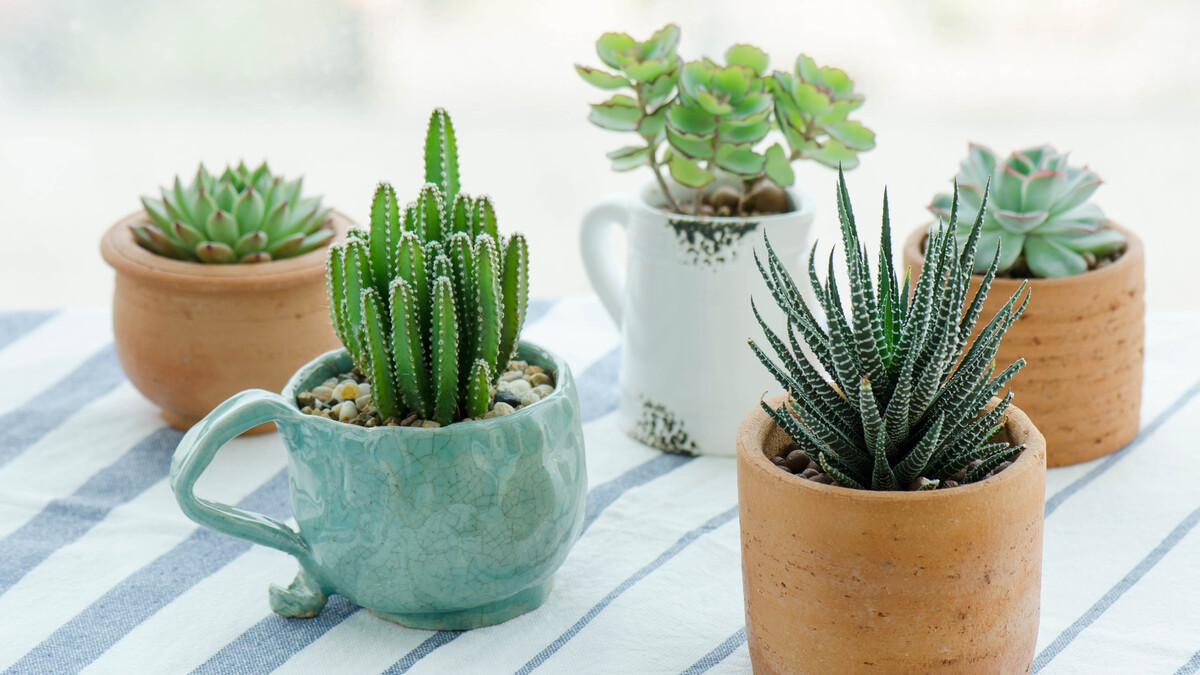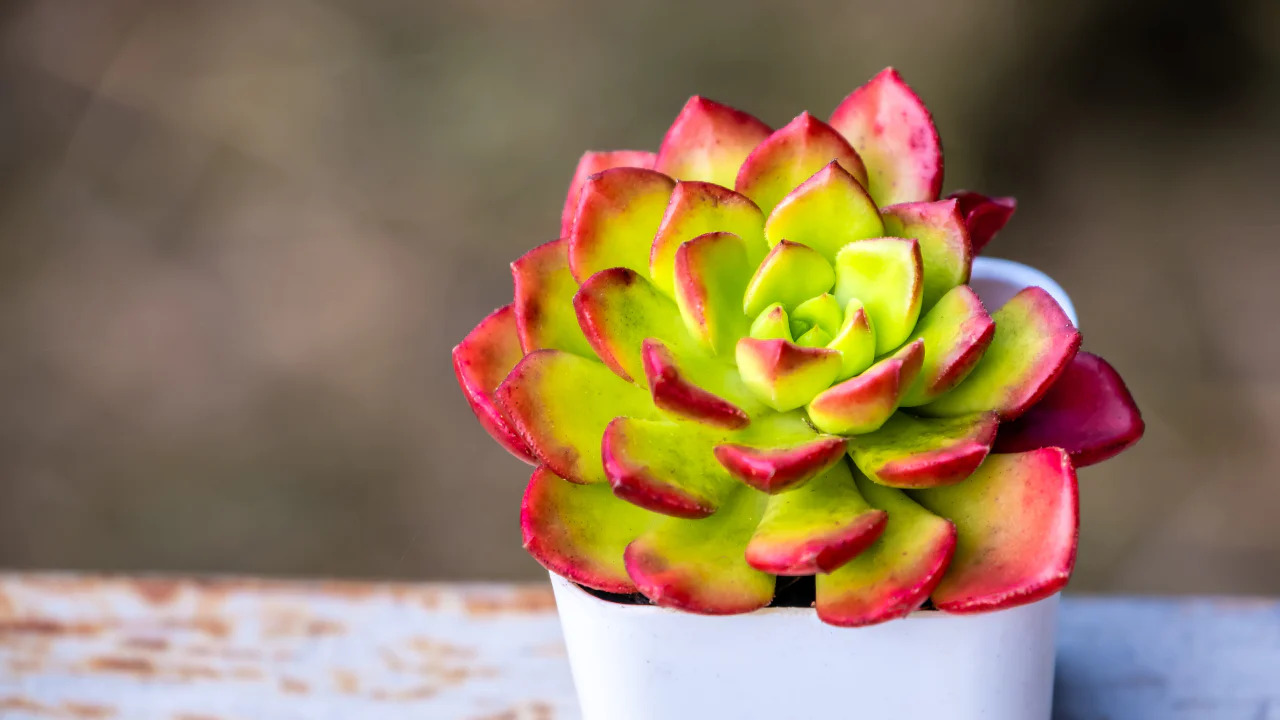Home>Types of Gardening>Ornamental Gardening>How To Make Crested Succulents


Ornamental Gardening
How To Make Crested Succulents
Modified: February 9, 2024
Learn how to create beautiful crested succulents with our step-by-step guide to ornamental gardening. Enhance your garden with these unique and eye-catching plants.
(Many of the links in this article redirect to a specific reviewed product. Your purchase of these products through affiliate links helps to generate commission for Chicagolandgardening.com, at no extra cost. Learn more)
Table of Contents
Introduction
Welcome to the wonderful world of crested succulents! These intriguing plants, with their unique and mesmerizing growth patterns, have captivated the hearts of ornamental gardening enthusiasts around the globe. From their fascinating crest formations to their vibrant colors, crested succulents add a touch of elegance and whimsy to any garden or indoor space. Whether you’re a seasoned green thumb or a novice gardener looking to try something new, this article will serve as your comprehensive guide on how to make your own crested succulents thrive.
Often referred to as “cristate” or “monstrose” succulents, crested succulents exhibit a rare and highly sought-after genetic mutation that causes the growing point to form a broad, flattened crest instead of the usual compact rosette or stem. This mutation results in a stunning array of shapes and textures, making each crested succulent a truly one-of-a-kind botanical masterpiece.
In this article, we will explore the various aspects of cultivating and caring for crested succulents. We will discuss how to choose the right species, prepare the necessary potting mix, propagate new plants, transplant them successfully, and provide them with the ideal lighting conditions. Furthermore, we’ll delve into the intricacies of watering, drainage, fertilizing, pruning, and general maintenance to ensure that your crested succulents thrive for years to come.
Whether you’re planning to create an eye-catching succulent arrangement, adorn your windowsill, or add a touch of intrigue to your outdoor landscape, crested succulents are a must-have addition. So, let’s roll up our sleeves, don our gardening gloves, and embark on a journey into the enchanting world of crested succulents!
Choosing the Right Species of Crested Succulents
When it comes to choosing crested succulents for your garden or indoor collection, there is a wide variety of species to select from. Each species has its own unique characteristics, growth habits, and care requirements. Here are a few popular species of crested succulents to consider:
- Echeveria ‘Crested’ (Crested Echeveria): With its rosette-like crest formation, this species is a favorite among succulent enthusiasts. It showcases fleshy leaves in various shades of green and may produce vividly colored flowers in the summer.
- Gymnocalycium mihanovichii ‘Hibotan’ (Moon Cactus): This unique crested succulent is actually a mutant form of the Gymnocalycium mihanovichii. It lacks chlorophyll, hence its vibrant red, orange, or yellow color. It requires grafting onto another cactus to survive since it can’t photosynthesize on its own.
- Euphorbia lactea ‘Cristata’ (Crested Elkhorn): Featuring undulating, fan-like crests with thorny edges, this crested succulent is native to South Asia. It prefers bright, indirect light and well-draining soil.
- Schlumbergera ‘Cristata’ (Crested Christmas Cactus): This crested form of the popular Christmas cactus displays crested, flattened stem segments. It blooms in winter, producing beautiful flowers in shades of pink, red, white, or purple.
When choosing crested succulents, consider factors such as your climate, desired growth habit, and care requirements. If you live in a relatively cold region, opt for cold-hardy species that can withstand frost and low temperatures. Alternatively, if you reside in a warmer climate, you have a wider array of options to choose from.
Additionally, keep in mind the space available for your crested succulents. Some species, like Gymnocalycium mihanovichii ‘Hibotan’, are smaller and more compact, making them perfect for limited spaces or container gardens. Others, such as Euphorbia lactea ‘Cristata’, can grow quite large and may require more room to sprawl or be displayed as a focal point in your garden.
Lastly, consider your personal preferences and the overall aesthetic of your garden or indoor space. Different crested succulent species offer various shapes, colors, and textures, allowing you to create visually stunning arrangements or showcase individual specimens.
Now that you have a better understanding of some popular crested succulent species, you can choose the ones that are best suited for your gardening goals and climate. Remember to take into account their care requirements, as we will delve into those aspects in the following sections of this article.
Preparing the Potting Mix
One of the key factors in successfully growing and nurturing crested succulents is providing them with a well-draining potting mix. This ensures that excess moisture does not accumulate around the roots, preventing rot and other common issues. Here’s how you can prepare the perfect potting mix for your crested succulents:
1. Choose the Right Soil: Opt for a well-draining soil mixture specifically formulated for succulents and cacti. These mixes often contain a combination of organic matter, like compost or peat moss, and inorganic materials, such as perlite or pumice. Avoid using regular garden soil, as it tends to retain water and can suffocate the roots.
2. Add Inorganic Material: To improve drainage and prevent the potting mix from becoming compacted, incorporate inorganic materials such as perlite, pumice, or coarse sand. These materials create air pockets in the soil, ensuring that excess water flows through freely.
3. Consider Nutrient Content: While crested succulents can tolerate relatively poor soil conditions, they still require some nutrients to thrive. You can enrich the potting mix by adding a slow-release succulent fertilizer or organic amendments like worm castings. These additions provide essential nutrients over time, promoting healthy growth.
4. Maintain the pH Balance: Most succulents prefer slightly acidic to neutral soil pH. Aim for a pH level of around 6.0 to 7.0. You can adjust the pH by adding ingredients like agricultural limestone to raise the pH or elemental sulfur to lower it.
5. Mix the Ingredients: Once you have gathered the necessary components, thoroughly mix them in a large container or bucket. Ensure that the materials are uniformly distributed to create a well-balanced potting mix.
Remember, it’s essential to use a well-draining potting mix to prevent waterlogged soil, which can lead to root rot and other fungal diseases. Proper soil preparation sets the foundation for healthy growth and helps your crested succulents thrive in their pots or garden beds.
Keep in mind that different crested succulent species may have slightly different soil preferences. Some may require a mix that is slightly more moisture-retentive, while others, like cacti, prefer a gritty and fast-draining mix. Familiarize yourself with the specific care requirements of your chosen crested succulents to ensure you provide them with the most suitable potting mix.
Now that you have the know-how to prepare the perfect potting mix, let’s move on to the exciting world of propagating crested succulents!
Propagating Crested Succulents
Propagating crested succulents is a rewarding and cost-effective way to expand your collection or share these unique plants with fellow gardening enthusiasts. While some crested succulents can be a bit challenging to propagate, many species are relatively easy to propagate through various methods. Here are a few common techniques you can use:
1. Offsets or Pups: Many crested succulents produce offsets, also known as “pups” or “babies,” around their base. These small plants can be carefully separated from the parent plant using a clean and sharp knife or scissors. Before separating, allow the offsets to develop their own roots by leaving them attached to the parent plant for a few weeks. Once they have a sufficient root system, gently separate them and plant them in their own pots or suitable locations in the garden.
2. Leaf Cuttings: Another common method for propagating crested succulents is through leaf cuttings. Carefully select a healthy leaf from the parent plant and remove it by gently twisting it off the stem. Allow the leaf to dry and callus over for a few days before placing it on top of a well-draining soil mix. Water sparingly, and within a few weeks, you will start to see new roots emerging from the base of the leaf. These roots will eventually develop into a new plant.
3. Stem Cuttings: Some crested succulents can be propagated from stem cuttings. Using a clean and sharp knife or scissors, carefully cut a section of the stem, ensuring that it is at least a few inches long. Allow the cutting to dry and callus over for a few days. Then, plant the cutting in a well-draining soil mix, burying about a third of the stem. Mist the soil lightly, and place the cutting in a warm and bright location. Within a few weeks or months, the cutting will develop roots and start to grow.
4. Grafting: For crested succulents that are challenging to propagate through traditional methods, grafting is an option. Grafting involves attaching a crested succulent onto the established rootstock of another plant, usually a columnar cactus or a healthy non-crested succulent. This method allows the crested succulent to access the nutrients and support it needs to thrive.
Regardless of the propagation method you choose, it’s crucial to provide the right growing conditions for the new plants. Place them in a warm, bright location, but avoid direct sunlight initially, as it can cause sunburn. Water sparingly, allowing the soil to dry out between each watering to prevent rot. Over time, you will witness new growth and the establishment of healthy crested succulents.
Now that you’re equipped with the knowledge of how to propagate crested succulents, it’s time to learn about transplanting these unique plants to their new homes!
Transplanting Crested Succulents
Transplanting crested succulents is an important step in their growth and care. Whether you want to move them to a larger container, a different location in your garden, or simply refresh their soil, proper transplanting techniques will help ensure their continued health and vigor. Here’s how you can transplant your crested succulents successfully:
1. Choose the Right Time: The best time to transplant your crested succulents is during their active growing season, typically in spring or early summer. Avoid transplanting during periods of stress, such as extreme heat or cold.
2. Prepare the New Container or Location: If you’re transferring your crested succulent to a new container, select one that allows for proper drainage and has enough space for the plant’s roots to expand. Make sure the container is clean and has a layer of well-draining potting mix at the bottom. If transplanting into the garden, ensure the soil is well-prepared with an appropriate succulent-friendly mix.
3. Gently Remove the Plant: Carefully loosen the soil around the root system of the crested succulent. Be cautious not to damage the roots or the crest as you lift the plant out of its current container or location. If the plant is too firmly rooted, you can use a clean, blunt tool to carefully dislodge it without causing harm.
4. Inspect and Prune: As you remove the crested succulent from its current pot or location, take the opportunity to inspect the roots for any signs of rot or damage. If you notice any unhealthy or decaying roots, prune them with sterile gardening shears to promote healthier growth.
5. Place in the New Container or Location: Position the crested succulent in the center of the new container or the prepared hole in the garden. Gently add the well-draining potting mix or soil around the roots, ensuring that the plant is stable and upright. Avoid burying the crest too deeply, as it can cause rotting.
6. Allow the Root System to Settle: After transplanting, refrain from watering the crested succulent immediately. Give the plant a few days to settle in its new environment before resuming a regular watering routine. This allows the roots to adjust and helps prevent the risk of overwatering or root rot.
7. Monitor and Care: Keep a close eye on your transplanted crested succulents in the following weeks. Water them sparingly, only when the soil is completely dry. Provide them with adequate sunlight or shade, depending on their specific needs. Monitor for any signs of stress or disease, and make adjustments accordingly.
Remember, transplant shock is common when moving plants to new containers or locations. It’s normal for crested succulents to experience some temporary drooping or color changes after transplanting. With proper care and attention, they will recover and continue to flourish in their new home.
Now that you’ve learned how to transplant crested succulents successfully, let’s dive into the importance of lighting when it comes to their growth and development.
Providing Proper Lighting
Proper lighting is crucial for the optimal growth and development of crested succulents. These plants have specific light requirements that, if not met, can result in stretched or etiolated growth, poor coloring, and overall weakened health. Here’s what you need to know about providing the right lighting for your crested succulents:
1. Bright Indirect Light: Most crested succulents thrive in bright, indirect light. They require several hours of sunlight each day to grow and maintain their vibrant colors. Place your crested succulents near a south or east-facing window where they can receive filtered sunlight throughout the day. If you’re growing them indoors, you can also use artificial grow lights to supplement the natural light.
2. Avoid Direct Sunlight: While crested succulents need ample light, direct sunlight can be too intense for them, especially during the hottest parts of the day. Intense sun exposure can cause sunburn, bleaching, or scorching of the leaves. If your crested succulents are exposed to direct sunlight, provide some shade during the peak hours or use a sheer curtain to filter the light.
3. Adjust for Different Seasons: Consider the changing angles of the sun throughout the year. During the winter months, when the sun is lower in the sky, your crested succulents might require more direct light. In contrast, during the summer months, when the sun is higher, they may need some shade or protection from the intense midday sun.
4. Monitor for Light Preferences: Each crested succulent species may have slightly different light requirements. Some species, like Echeveria ‘Crested,’ prefer more sunlight and can tolerate direct light, while others, like Schlumbergera ‘Cristata,’ prefer lower light conditions and do well in slightly shadier spots. Monitor the plant’s response to the light it receives and adjust accordingly to ensure optimal growth.
5. Rotate for Balanced Growth: To promote even growth and prevent your crested succulents from leaning towards the light source, rotate the pots regularly. This ensures that all sides of the plant receive equal exposure to light, resulting in a balanced and symmetrical appearance.
Remember, finding the right balance of light for your crested succulents might require some trial and error. Pay attention to the plant’s response, such as color intensity, growth rate, and overall health. Adjust the lighting conditions accordingly to provide the perfect environment for their thriving growth.
Now that you understand the importance of proper lighting for crested succulents, let’s move on to the next section: watering and drainage tips to ensure their well-being.
Watering and Drainage Tips
Proper watering and drainage are essential for the health and longevity of crested succulents. These unique plants have adapted to survive in arid environments by storing water in their fleshy leaves and stems. Here are some important tips to help you maintain the right balance of moisture for your crested succulents:
1. Water Sparingly: Crested succulents have low water needs. Overwatering is one of the most common mistakes made when caring for these plants. Allow the soil to dry out completely before watering again. Stick your finger into the soil about an inch deep – if it feels dry, it’s time to water.
2. Use the “Soak and Dry” Method: When watering, use the “soak and dry” method. Thoroughly saturate the soil until water drains out of the bottom of the pot, then allow it to completely dry before watering again. This method mimics the natural rainfall patterns these plants experience in their native habitats.
3. Avoid Standing Water: Ensure that your crested succulents are not sitting in standing water, as this can lead to root rot. Choose pots with drainage holes and use a well-draining potting mix to facilitate proper water drainage.
4. Consider the Season and Growth Stage: Adjust your watering frequency based on the season and growth stage of your crested succulents. During the active growing season, typically spring and summer, they may require more frequent watering. In contrast, reduce watering during the dormant period in fall and winter.
5. Watch for Signs of Under or Overwatering: Pay attention to the clues your crested succulents provide. Wrinkled or shriveled leaves are a sign of underwatering, while yellowing, mushy, or blackened leaves may indicate overwatering. Adjust your watering schedule accordingly to address these issues.
6. Consider the Climate: Take into account your local climate when determining your crested succulents’ watering needs. In hot and dry climates, they may require more frequent watering, while in cooler and more humid regions, less watering is necessary.
7. Water at the Soil Level: When watering, aim to wet the soil around the plant’s roots rather than spraying water directly onto the leaves. This helps prevent rot and allows the roots to absorb the moisture effectively.
Remember, it’s better to underwater than to overwater crested succulents. Err on the side of caution and allow the plants to experience some drought, as this encourages robust root growth. The ability to retain water is one of the unique features of these succulents, so a careful balance of moisture is key to their overall health.
Now that you’re equipped with watering and drainage tips for your crested succulents, let’s explore the importance of providing them with essential nutrients through proper fertilization.
Fertilizing Crested Succulents
Fertilizing crested succulents is an important aspect of their care routine, as it provides them with essential nutrients to support healthy growth and vibrant colors. While these plants are known for their ability to thrive in nutrient-poor soils, they can still benefit from occasional fertilization. Here are some key tips to keep in mind when fertilizing your crested succulents:
1. Choose the Right Fertilizer: Select a balanced, water-soluble fertilizer specifically designed for succulents and cacti. Look for a fertilizer with an NPK ratio (nitrogen, phosphorus, potassium) that is balanced or has a higher phosphorus and potassium content, as these nutrients promote strong roots and overall plant health.
2. Dilute the Fertilizer: Succulents have delicate root systems, so it’s crucial not to apply fertilizer at full strength, as it can lead to fertilizer burn. Dilute the fertilizer to half or one-quarter strength according to the instructions on the package.
3. Fertilize During the Growing Season: Apply fertilizer to your crested succulents only during their active growing season, which is typically from spring to early fall. Avoid fertilizing during the dormant period in winter, as the plants are not actively growing and do not require additional nutrients.
4. Apply Fertilizer Sparingly: Less is more when it comes to fertilizing crested succulents. Apply the diluted fertilizer sparingly, taking care to avoid getting it on the leaves or in the crown of the plant. Gently pour the diluted solution onto the soil around the base of the plant, allowing it to soak in.
5. Monitor for Signs of Overfertilization: Watch out for signs of overfertilization, such as leaf discoloration, wilting, or stunted growth. If you notice any negative effects, thoroughly flush the soil with water to remove excess fertilizer salts and adjust your fertilization routine accordingly.
6. Supplement with Organic Amendments: In addition to using water-soluble fertilizers, you can supplement the nutrition of your crested succulents with organic amendments. Worm castings, compost, or well-decomposed organic matter can provide slow-release nutrients and enrich the soil over time.
7. Follow a Regular Fertilization Schedule: Establish a regular fertilization schedule based on the needs of your crested succulents. Fertilize every two to four weeks during the active growing season, tailoring the frequency to the specific requirements of each individual plant and the potency of the fertilizer being used.
Remember, fertilization is an additional boost for crested succulents, not a substitute for proper care and other crucial factors like adequate lighting and watering. When done correctly, fertilization can contribute to the overall health and beauty of your crested succulents.
With the knowledge of fertilizing crested succulents in your tool belt, let’s move on to the importance of regular pruning and maintenance to keep your plants looking their best.
Pruning and Maintenance
Pruning and regular maintenance are essential for keeping your crested succulents in optimal health and appearance. While these plants are generally low-maintenance, a little bit of care goes a long way in ensuring their longevity and beauty. Here are some important tips for pruning and maintaining your crested succulents:
1. Remove Dead or Dying Leaves: As with any succulent, it’s important to prune away dead or dying leaves from your crested succulents. Use clean and sterilized pruning shears or scissors to carefully trim off any brown, withered, or damaged leaves. This not only improves the plant’s appearance but also helps prevent the spread of diseases or pests.
2. Control Overgrowth: Crested succulents can sometimes exhibit vigorous growth, resulting in overcrowding or a leggy appearance. To control overgrowth, selectively prune back excessively long or unruly stems using sharp and sterile tools. This helps maintain a more compact and aesthetically pleasing shape.
3. Propagate Through Pruning: When pruning your crested succulents, take advantage of the opportunity to propagate new plants. Stem cuttings, offsets, or leaf cuttings can be harvested from the pruned sections and used to grow new plants, expanding your collection or sharing with fellow gardening enthusiasts.
4. Clean and Inspect: Regularly clean your crested succulents by gently wiping the leaves with a soft cloth or brush to remove dust or debris. This not only enhances their appearance but also helps promote better photosynthesis. While cleaning, closely inspect the plants for any signs of pests or diseases, such as webs, spots, or discoloration.
5. Address Pest and Disease Issues: If you notice any signs of pests or diseases, take immediate action to address the problem. Common pests that may affect crested succulents include mealybugs, aphids, and spider mites. Treat infestations with organic or chemical solutions formulated for succulents, following the instructions carefully.
6. Protect from Extreme Weather: During periods of extreme weather, such as heatwaves or frost, provide your crested succulents with appropriate protection. Move them to a more protected location or provide shade cloth or frost blankets to shield them from excessive heat or cold.
7. Regularly Rotate and Reorganize: To promote even growth and prevent lopsidedness, regularly rotate your crested succulents to ensure all sides receive equal exposure to light. Reorganize their placement within your garden or indoor space to keep them visually appealing and prevent overcrowding.
By implementing regular pruning and maintenance practices, you can keep your crested succulents looking their best and ensure their long-term health and vitality. Remember to always handle and prune your plants with care to avoid damaging the delicate crests or stems.
Now that you have the knowledge to properly maintain your crested succulents, you are ready to create a stunning display of these fascinating plants in your garden or indoor space.
Conclusion
Congratulations! You have now delved into the captivating world of crested succulents and discovered the secrets to their successful cultivation. From choosing the right species and preparing the optimal potting mix to propagating, transplanting, and providing proper lighting, watering, fertilizing, and maintenance, you have gained valuable knowledge to help your crested succulents thrive.
Remember, crested succulents are unique and mesmerizing plants that add charm and elegance to any garden or indoor space. Their vibrant colors, fascinating crest formations, and ability to adapt to various environments make them a delightful addition to your ornamental gardening collection.
As you embark on your journey of caring for crested succulents, remember to thoroughly research the specific needs and care requirements of each species you choose. Every succulent is unique, and tailoring your care routine to match their preferences will contribute to their overall health and beauty.
Embrace the creativity and joy of caring for these stunning plants, experimenting with different species, arranging them in eye-catching displays, and sharing your knowledge with fellow gardening enthusiasts. The world of crested succulents is vast, with countless species, colors, and textures to explore, allowing you to create a diverse and captivating collection.
As you continue to care for your crested succulents, don’t be afraid to learn through trial and error. Observe their response to different conditions, adjust your care routine as needed, and take pride in the progress and growth you see.
By following the practices outlined in this article and infusing your own love and passion for gardening, you are well on your way to becoming a successful caretaker of these fascinating plants. Enjoy the journey of tending to your crested succulents and creating your own botanical oasis!


